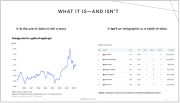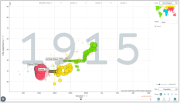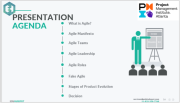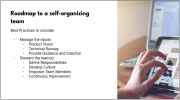Written by: Alex Leonard, PMP
Incorporating agility allows for a quicker response to changes and opportunities. Attendees learned the simple approaches to leverage flexibility and adaptability, that ultimately leads to more successful project outcomes.
Presentation Overview 
On April 18, 2023, the Agile Forum of the PMI Atlanta Chapter hosted the “Incorporating Agility into Waterfall Projects” Special Interest Forum Event as presented by Amber Chandler. Amber has made a career in the Agile space, supporting organizations through Lean-Agile transformations, and helping solution-oriented professionals solve problems.
Throughout the course of a 1-hour presentation, Amber discussed the importance of incorporating the Agile methodology into those environments that utilize a traditional waterfall approach to project/product management. Some areas Amber focused on included an overview of traditional Waterfall vs. Agile Methodologies, the Agile Manifesto, and how to embrace the Agile mindset and implement adaptive techniques without any direct authority.
Amber made a point to emphasize that while both Agile & Waterfall are useful methodologies, knowing how and when to use them is what’s key.
Takeaways
- “Incorporating agility into a waterfall project, does NOT mean using Scrum and Kanban exclusively.”
- Agility relies heavily on flexibility, communication, time & costs.
- Agile is a mindset – it is not an “on/off” switch; however, one should not expect to check every single “Agility Box” each day.
- When operating in a waterfall environment, it is a good practice for a person to operate under a “second layer” where agile techniques such as iterative planning/execution or adaptive scope management can be incorporated, even if the team or organization has not yet transitioned into the Agile way.
Next Event
Join us at the next PMI Atlanta Chapter “In-Person” Agile forum on May 16, 2023
Keynote Presentation: "Agile & Cybersecurity" by Andrew Gurbaxani, vCIO at Assessivate LLC
Register at www.pmiatlanta.org/events/event-calendar
Event Pictures














